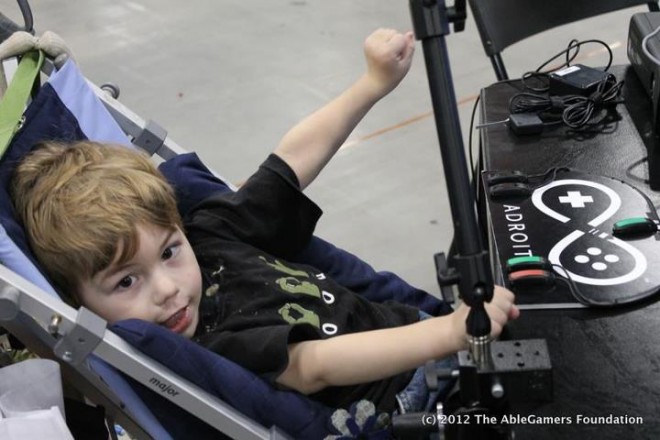Virtual reality devices have the option to allow everyone access to games, regardless of the disability. But most current devices aren’t going down that path. The Oculus Rift and HTC Vive both require controllers in order to interact with the virtual space, and even Samsung Gear requires your hands to be next to the temple at all times to control the device.
This ableism can be seen with traditional controllers for consoles, requiring two hands to use properly. While there are groups like The Controller Project, who focus on making controllers for disabled people, VR shouldn’t have this barrier to entry. Since it is a fresh field, relapsing into the previous method of control just means that we are playing in the same way while putting a smaller screen on our head. It cuts out a whole range of disabled players from the start.
![]()
Occam’s Razor, would usually say that the easiest solution is the best solution. This term, first created in the 13th century by William of Occam, denotes a method by which scientists try and come up with the right solution — which is usually the easiest one (you can read more about that here.)
If we are to look at the tech behind VR, there would are two main points of view where the easiest solution is completely different.
First, you can apply Occam’s Razor to VR as a path from consoles to the latest tech. In doing so, we would stick with the ableist structure of “hand held controllers have worked in the past, and they will work in the future.”
On the other hand, if you apply Occam’s Razor to VR from the perspective of a new field the answer might not necessarily be the same. In order to interact with the virtual sphere, the easiest way could be to interact directly. This could be done with something like FOVE VR’s eye tracking device. Or it can also be approached with Microsoft HoloLen’s voice recognition software.
When coming up with the cool ways to interact with tracking, HTC Vive went even further by adding two cameras in the room to see where you are going. But due to its cost, the need for controllers, and the space required — the Vive isn’t the ideal solution for people with disabilities.
If someone who is designing the VR tech is reading this, would it be possible to approach VR similar to how we do prosthetic limbs? Instead of thinking that the person has the ability to use their hands, the focus could be turned towards other body parts when developing control systems. For example, an arm band or a bracelet could be combined with Vive’s camera tracking.
Another thing that has been developed over the past several years are brain computer interfaces, like Neurosky’s Mindwave. It is a gaming BCI that uses your brain waves to throw commands to the computer, telling the avatar to move or shoot. Although, going back to Occam’s Razor, this might not be the ideal solution. It is, however, a possible one.
***
The race to perfect virtual reality is far from over. But since there is still an open playing field in which to find the correct answer, companies should focus on what isn’t ableist. At least this way, everyone can end up playing the same game despite their disability.







Published: Apr 10, 2016 05:19 am